Expanding electric grids is essential for the energy transition
Deployment of renewables and electrification are picking up pace, therefore the capacity of transmission and distribution networks must be expanded.

![]()
header.search.error
Deployment of renewables and electrification are picking up pace, therefore the capacity of transmission and distribution networks must be expanded.
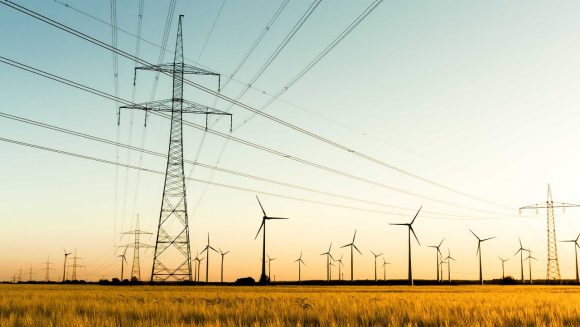
Various voltage levels of electric grid to transport electricity efficiently
The global electric grid – built mostly as overhead lines – measures approximately 80 million kilometers, of which 93% is distribution and 7% transmission network. It is expanded by around 1 million kilometers a year.1 Depending on the voltage of transported electricity, the electric grid is divided into four levels. The transmission system – with extra-high voltages of 220 kilovolts (kV) or 380 kV – is used to transport electricity over great distances with minimal losses. It supplies generators with an output of several 100 gigawatts (GW). All the other voltage levels are part of the distribution grid. The 110 kV high-voltage grid is fed by medium-size generators and supplies large electricity consumers. The medium-voltage level network of 1-50 kV is fed by smaller local producers, such as municipal utilities, or wind and solar farms. It supplies medium-size electricity consumers and is used for general municipal distribution. The low-voltage level network (400/230 V) distributes electricity to private households or businesses.2 It also absorbs excess electricity from photovoltaic roof systems and supplies heat pumps. In 2022, annual investments in the global electricity grid amounted to around USD 300 billion.3
In order to achieve net zero targets, the expansion of the power grid and the development of renewable energy sources must go hand in hand. According to the International Energy Agency (IEA), increasing the share of renewable energy sources in the global energy mix will likely require investments of approximately USD 450 billion by 2030 in electric grids alone. This means that 40% must be invested in the electric grid and 60% in the electricity production. Between 2041 and 2050, the share of investments in the electric grid is forecast to rise to even 50% or USD 800 billion annual capital expenditure.3
Announced commitments in USD billion, 2016–2050E
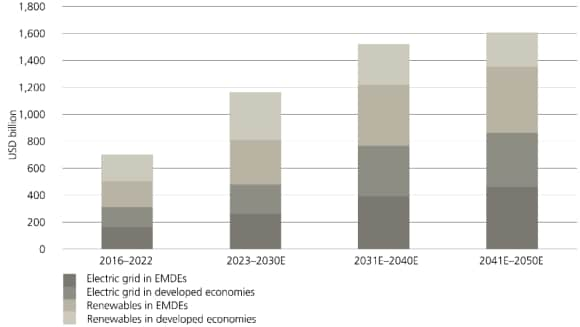
According to the EU Commission, electricity consumption is expected to rise by 60% by 2030 due to the increasing electrification of the heating, transport, and industrial sectors. This means that expanding Europe’s electric grid needs to accelerate markedly. New heat pumps and charging stations that continue to be installed, coupled with the increasingly decentralized production of electricity, are placing an additional strain on the grid. In addition, since more and more energy comes from renewable sources, it is essential to constantly balance electricity generation with electricity demand. Digital technologies are believed to help integrate decentralized forms of renewable energy sources successfully and minimize supply interruptions. In total, the necessary electricity infrastructure investments are estimated to reach EUR 584 billion between 2020 and 2030.4
The addition of renewable energy sources is thus changing the premises for the supply network. On the supply side, the primary energy mix is likely to change in favor of renewable energy sources. In particular, the share of weather- and location-dependent energy sources – photovoltaics and wind energy – have the potential to increase significantly, while controllable renewable energies, such as biomass and hydropower, are expected to only increase marginally. The energy supply is becoming decentralized. Instead of a few large power plants, there will probably be many medium-sized and smaller producers located where the most favorable climatic and geographical conditions prevail.
The electric grid has to ensure functionality despite the mismatch between energy production and consumption, since the time load on the network changes on the demand side. One example where this is particularly evident is California, where solar energy has become increasingly important. The so-called "duck curve" phenomenon is caused by the high production of solar energy coupled with low demand at lunchtime.
Net load of an electric grid in GW between March and May, 2015–2023
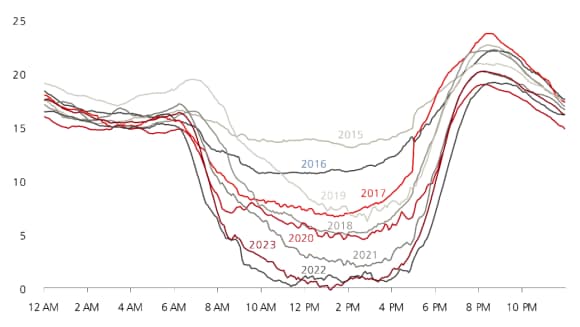
Given the extreme swings in demand for electricity at various times of a day and the resulting mismatch between energy production and consumption, energy storage is of great importance, the more so that expanding the grid does not keep pace with production. According to the IEA, at least 3,000 gigawatts (GW) of renewable power projects worldwide, of which 1,500 GW are in advanced stages, are waiting for approval to be connected to the grid.5
In Germany, too, the accelerated deployment of clean energy alternatives and the gradual phasing-out of fossil fuels and nuclear energy are adding pressure to the country’s electric grid. The reason is the lack of a fully constructed and reliable high-voltage transmission system to transport wind power from the North Sea and Baltic Sea coasts to the densely populated and industrialized southern federal states. In order to prevent the existing network from being overloaded, the high-voltage grid operators instruct energy producers to reduce the output of certain facilities and ramp it up elsewhere ("redispatch").6 As Figure 3 shows, wind energy is disproportionately affected by these measures, while power plants powered primarily by coal and natural gas are put into operation instead. The electricity production of 8,000 GWh, curtailed in 2022, corresponds roughly to the annual output of a medium-size nuclear power plant with an output of 1 GW.7
Downtime of renewable energy sources in GWh
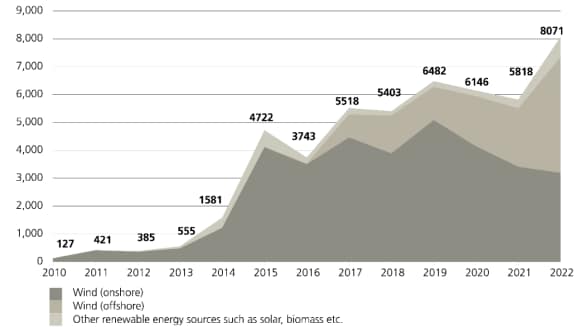
Redispatch measures are complex and expensive. The costs of load management, which are passed on to network usage fees, have increased significantly in Germany in recent years. In 2020, network-related costs amounted to EUR 240 million, a figure that increased to EUR 2.7 billion in 2022: EUR 1.8 billion for switching on fossil-fuel power plants – driven by the rise in fuel prices – and EUR 0.9 billion for the financial compensation paid mainly to wind farm operators.8
Fluctuations in power delivered from renewable energy systems, new decentralized distribution of electricity generation, and energy supply management necessitate extensive adjustments and accelerated expansion of grid infrastructure. The recently presented EU Action Plan aims to accelerate projects and improve long-term grid planning to use more electricity from renewable sources and integrate electricity demand, including hydrogen, into the energy system. 9
Germany intends to accelerate the planning process by e.g. acquiring a stake in the high-voltage network operator Tennet. In addition, as an investment incentive for new investments in the distribution grid, the allowed equity return is to be significantly increased from January 1, 2024, by changing the formula for its calculation.10 The allowed return on equity should also be subject to adjustment for new investments in offshore wind farms and interconnectors.
In addition, the grid development plan in Germany envisages the construction of pumped-storage power plants with a capacity of 12 GW and up to 168 GW of large and small battery storage, while hydrogen could also be used as an energy source for seasonal storage of renewable energy.11
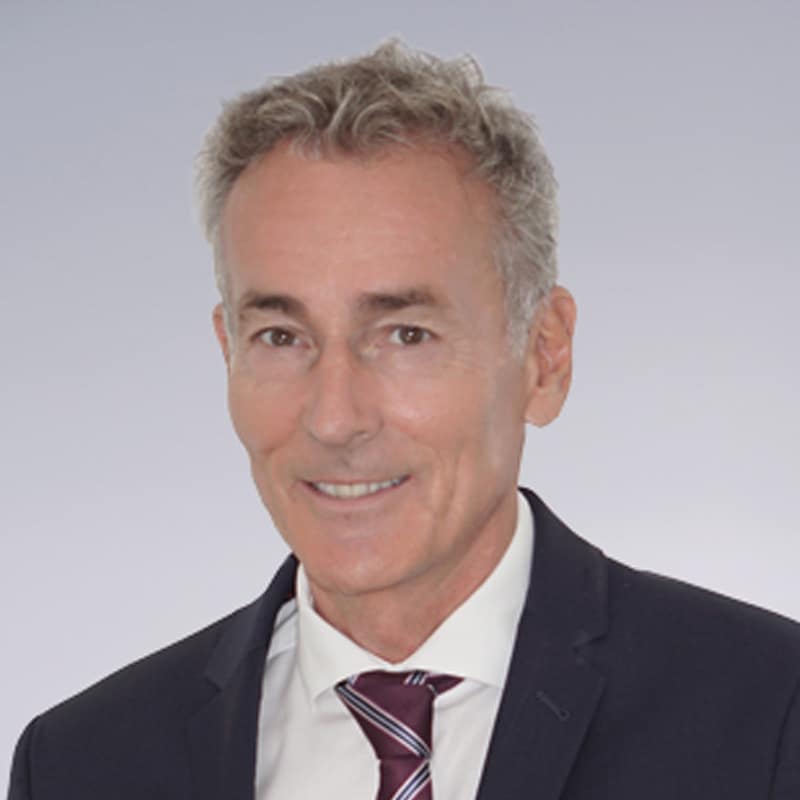
Senior portfolio manager, Thematic Equities
Werner Richli (MA, CEFA), Director, is a Senior Portfolio Manager on the Thematic Equity team. In 2003, Werner joined Credit Suisse Asset Management, now part of UBS Group, where he developed real estate research and was responsible for the asset allocation of the first real estate fund investing internationally as well as the development of the mandate business for international real estate investment. Starting in 1987, Werner worked as a financial analyst at Credit Suisse Investment Banking and assisted various Swiss companies with their initial public offerings. He holds a master’s degree in Business Administration from the University of Zurich, and he is a Certified European Financial Analyst (CEFA).
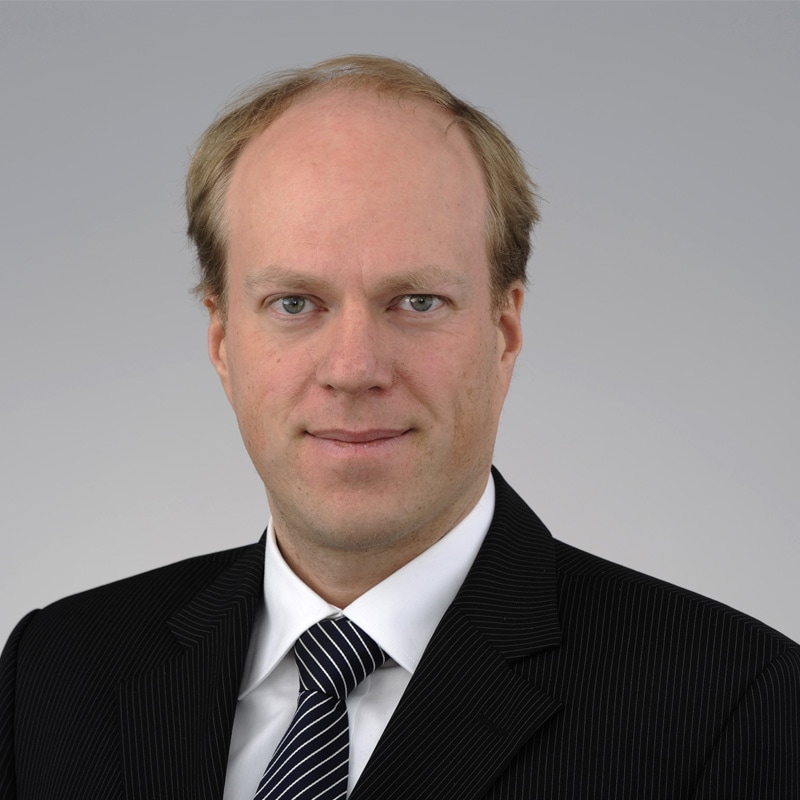
Senior portfolio manager, Thematic Equities
Heinz Tschabold (MA, CAIA), Director, is a Senior Portfolio Manager on the Thematic Equity team. In 2002, he joined Credit Suisse Asset Management, now part of UBS Group, and was initially responsible for implementing quantitative models in the real estate sector. Since 2006, he has been responsible for mandates in the area of international real estate and infrastructure investments as a Senior Portfolio Manager and he is also responsible for the selection of companies and funds. Before joining Credit Suisse, Heinz worked as financial analyst at UBS Warburg and assisted Swiss companies in the construction, machinery, and electrical engineering fields. Heinz holds a degree in Business Administration from the University of St. Gallen, a master’s degree in Finance, and is a Chartered Alternative Investment Analyst (CAIA).